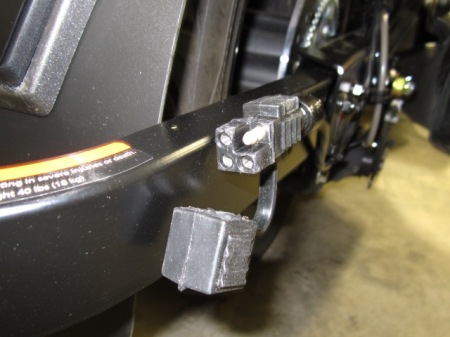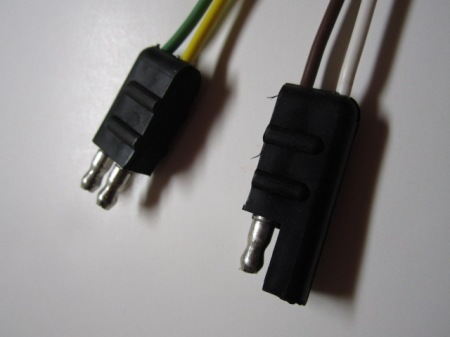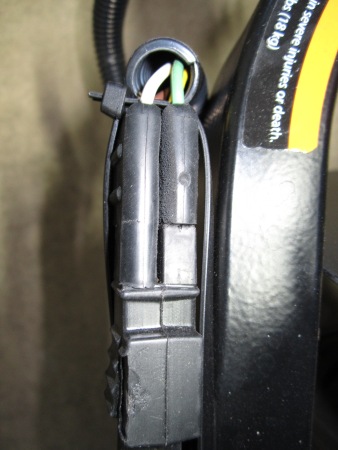Can't help you with the trailer plate question. I'd carry a copy of your state law exemption with you, in case you get stopped along the way. My wife does that with her '63 Falcon to explain the lack of seat belts.
The Sentry tows well as long as you watch both the total weight (remember that a loaded cooler can weigh 80 pounds or more) and the tongue weight. Any trailer will "hunt" if the tongue weight is too low. The Sentry is more subject to wind influence than smaller trailers, and will cost you some gas mileage as it is like towing a sheet of plywood through the air.
There are a couple of ways to address the 5-wire system of the Sentry. You can replace the amber turn signal lenses with red ones, then wire it as a 4-wire stsyem, either replacing the round-6 or just splicing in a square-4 connector. You could also make an adapter from square-4 to round-6. Another alternative is to wire a 5-wire pigtail directly into the Spyder lighting system, and don't use the OEM harness. That will also require a different connector on the Sentry, or an adapter. I took another approach. I separated the brake lights on the Sentry and added a wire running forward for the disconnected one. The brake lights were then able to used as both brake and turn on a 4-wire system. I spliced in a 4-wire connector, but retained my 6-wire plug (I replaced the round with a rectangular) for use with the adapter my other trailers use. With a jumper in my adapter I can use the trailer for either 4-wire or 5-wire systems...or the oddball early BRP 6-wire version without the jumper to connect the right and left brake circuits.
I don't remember the standard pinout for the square-4, but it is confusing anyway as it reverses depending on which half of the connector is being viewed. I believe BRP has reverted to standard trailer wiring colors leading to the square-4 connector, although this should be confirmed. In that case brown = running lights, green= right turn/brake, yellow = left turn/brake, and white = ground. Always best to just ring them out with a voltmeter, since I have seen some that were not standard patterns.






